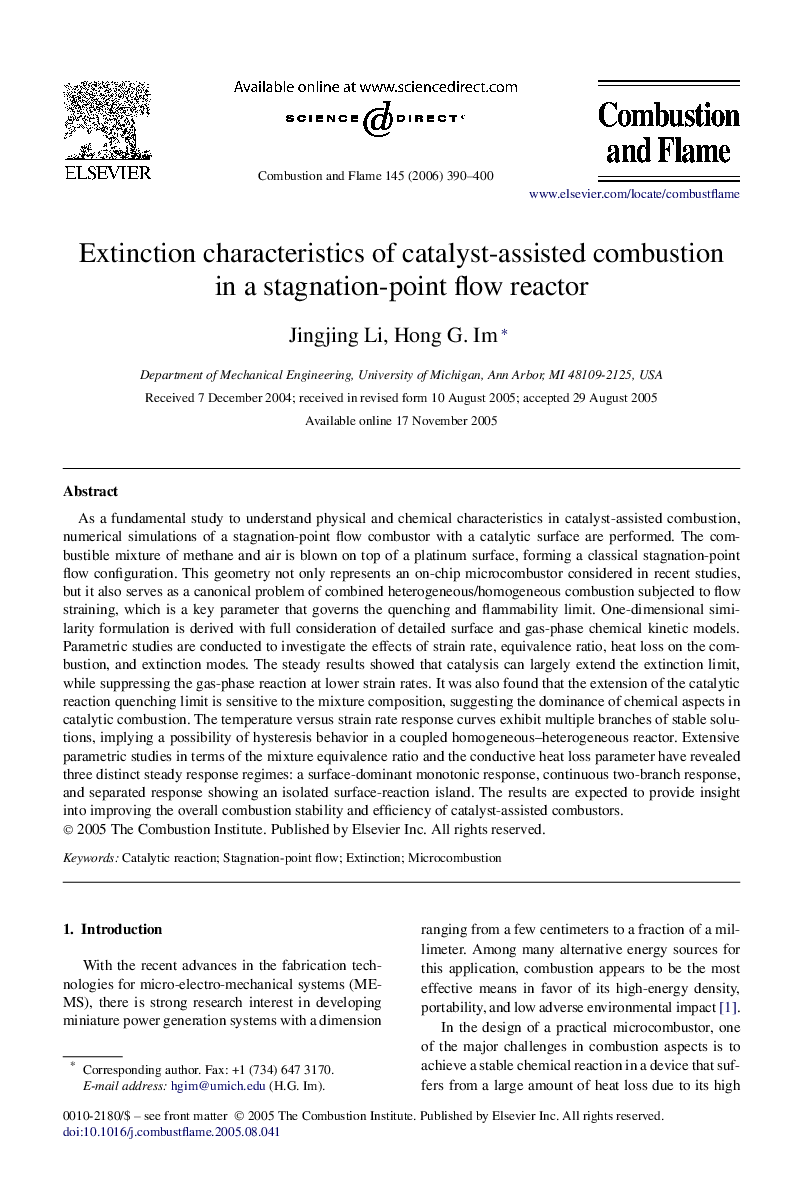| Article ID | Journal | Published Year | Pages | File Type |
|---|---|---|---|---|
| 170195 | Combustion and Flame | 2006 | 11 Pages |
As a fundamental study to understand physical and chemical characteristics in catalyst-assisted combustion, numerical simulations of a stagnation-point flow combustor with a catalytic surface are performed. The combustible mixture of methane and air is blown on top of a platinum surface, forming a classical stagnation-point flow configuration. This geometry not only represents an on-chip microcombustor considered in recent studies, but it also serves as a canonical problem of combined heterogeneous/homogeneous combustion subjected to flow straining, which is a key parameter that governs the quenching and flammability limit. One-dimensional similarity formulation is derived with full consideration of detailed surface and gas-phase chemical kinetic models. Parametric studies are conducted to investigate the effects of strain rate, equivalence ratio, heat loss on the combustion, and extinction modes. The steady results showed that catalysis can largely extend the extinction limit, while suppressing the gas-phase reaction at lower strain rates. It was also found that the extension of the catalytic reaction quenching limit is sensitive to the mixture composition, suggesting the dominance of chemical aspects in catalytic combustion. The temperature versus strain rate response curves exhibit multiple branches of stable solutions, implying a possibility of hysteresis behavior in a coupled homogeneous–heterogeneous reactor. Extensive parametric studies in terms of the mixture equivalence ratio and the conductive heat loss parameter have revealed three distinct steady response regimes: a surface-dominant monotonic response, continuous two-branch response, and separated response showing an isolated surface-reaction island. The results are expected to provide insight into improving the overall combustion stability and efficiency of catalyst-assisted combustors.
